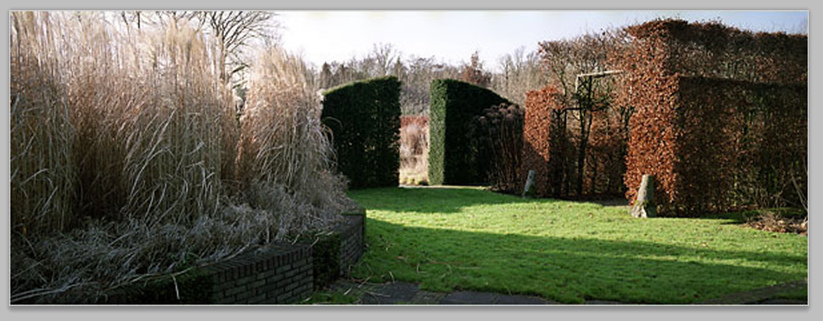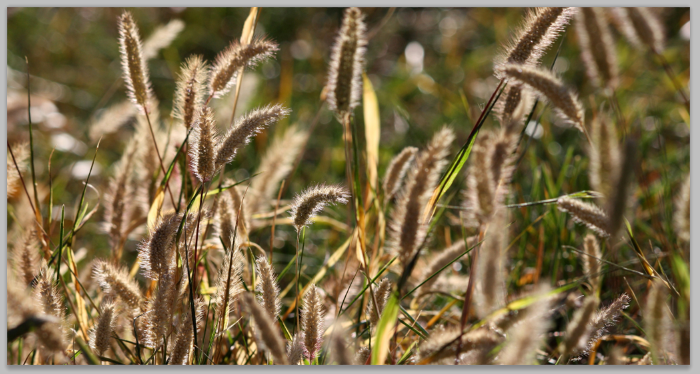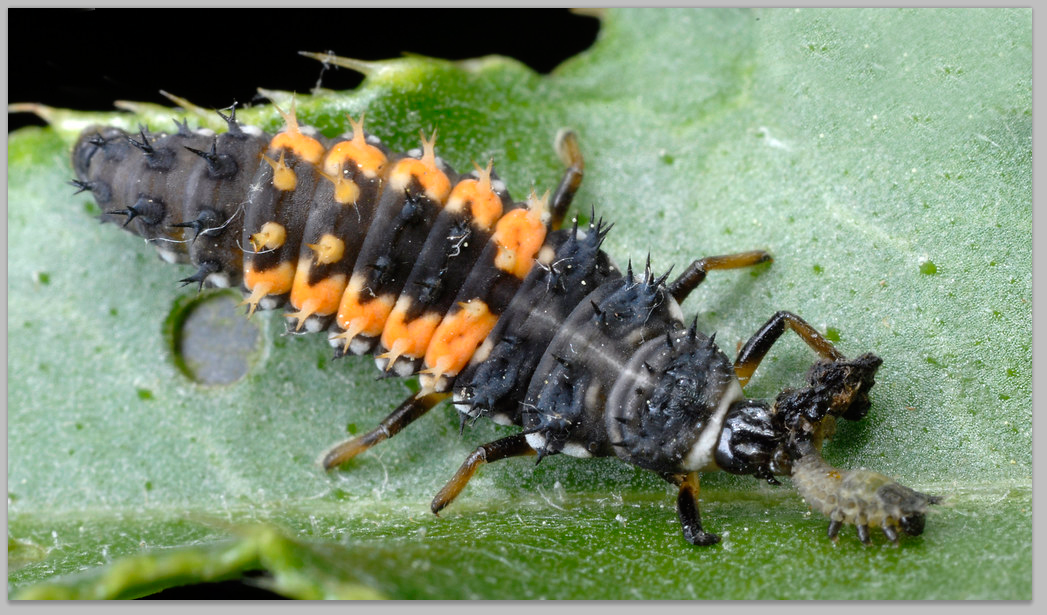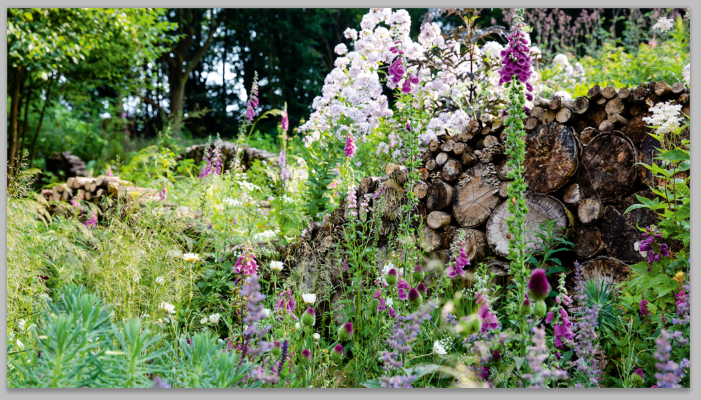|
As part of the learning process for my horticultural qualifications, the idea of putting your garden to bed for the winter was espoused time and time again. Everything was cut to the scut, tucked and trimmed and tidied, everything neat and in place, borders mulched, leaves collected to be turned into leafmould. Often leaving, not a shred of cover or food left for nature. Move forward 20 years and I no longer believe this is what should be done. Our gardens play an important role in supporting the local and maybe migrating wildlife and what we do to our gardens every autumn can either help or hinder that role. In fact, I strongly and actively encourage people to keep the garden leaves (maybe clear them from the lawns to around the trees and shrubs), the debris of herbaceous borders, even some of the summer containers - now spent - until the first leaves emerge in spring. Our gardens can become havens for all creatures, large and small, depending on how we tend to our cultivated spaces and what we plant and what we leave for the winter. A tidy garden can be a very hostile environment, wildlife can't find food or winter protection and will move elsewhere leaving your garden open to all the slugs, bugs, and greenfly that may attack your treasured plants once the spring comes around. The aim should be to preserve and create habitats for beneficial insects and predatory animals like birds and ladybirds, hedgehogs and frogs. So, some important reasons why it is better NOT to tidy your garden this autumn. Bees - The annual life-cycle of a bumblebee colony is usually at an end by now, the queens and males have mated and after mating, the queen then finds a suitable place to overwinter (often underground), ready to wake up in the spring and start the cycle again. The queen bee is the only bumblebee that survives through the winter – all the male bees and worker bees die off. Cold, dry places are the best sites for the queens to overwinter, where they are less likely to wake up early or get fungal attacks although, even then, only 50% of the queen bees survive the winter. Solitary bees are much more diverse and so are their overwintering habits. Many solitary bee species need a place to spend the winter that’s protected from cold and predators. Some hunker down under tree bark, or they may stay tucked away in the hollow stem of a summer perennial. Some spend the winter as an egg or larvae in a burrow in the ground and our gardens can provide them with much-needed winter habitat. Spring flying solitary bee species need to be able to emerge fairly quickly to take advantage of early-flowering food plants. These species develop over the summer, then overwinter as adults within a cocoon, ready to emerge in spring. Species that fly later in the year overwinter as larvae and develop over the spring, emerging as adults in late spring or summer. So when you are enjoying walks in the countryside or in your garden this autumn and winter, think of the millions of bees, their eggs and larvae all around you, hidden in their underground nests or the hollow stems of plants and other cold and dry places, ready for the new spring, to start flying once again. Moths and Butterflies When their surroundings become really cold, most butterflies and moths are forced to remain inactive, during this unfavourable season, most species enter a dormant phase. This can be as an egg, larva, pupa or adult insect, dependent upon species. The majority of butterflies and moths overwinter in the larval stage, some overwinter as pupae and some as eggs and adults. A few, such as the Speckled Wood, are capable of overwintering in more than one stage, as a caterpillar (larva) or a pupa. Those species that overwinter as dormant adults include butterflies such as Brimstone, Small Tortoiseshell, Peacock and Comma and moths such as the Twenty-plume Moth and the Herald. Among the butterflies, it is only the Small Tortoiseshell and Peacock that regularly come into our houses during late summer/ autumn to overwinter. Ladybirds and other predatory insects Most ladybirds will enter a dormant state soon after the temperatures start to drop and overwinter singly or in small groups, spending the colder months of the year tucked under a pile of leaves, nestled at the base of a plant, or hidden within a convenient log-pile. Ladybird larvae are notorious pest eaters, consuming soft-bodied pest insects and insect eggs every day. By bypassing the autumn clearance and leaving the garden intact until the spring is one important way to help these beneficial insects and means you’ll get a jump start on controlling pests species that emerge in the spring too. Ladybirds aren’t the only insects who spend the winter in an intact garden. Lacewings, ground beetles, and scores of other predatory insects spend the winter dormant in your garden as either adults, eggs, or pupae. To have a balanced population of these predatory insects, you have to have winter habitat for them and a clean and tidy garden just doesn't cut it. Log piles and leaf and twiggy debris stacks as well as cracks in bark, in or under the shed are suitable habitats that are a must for these really useful predators A thick layer of mulch or fallen leaves makes a cozy home for insects like millipedes, beetles, and earthworms. The leaves help them to overwinter and stay protected while they start shredding and decomposing the leaves. The soil underneath it stays healthy and fertile. When doing your garden tidy up pile raked up leaves onto garden beds and around trees and shrubs. Don’t over-tidy your flowerbeds – hollow stems provide shelter for overwintering insects. If you need to clear some plant material, cut stems can be left in stacks in a sheltered spot. A bug hotel is a great way to encourage beneficial insects like mason bees, lacewings, ladybirds, and spiders. The idea is to create a structure with a lot of small spaces that will provide shelter and nesting space. Birds Invertebrate-eating birds, like wrens, thrushes, blackbirds and all the tit family are very welcome in the garden and should be encouraged because they consume thousands of caterpillars and other pest insects as they raise their young every gardening season. Not cleaning up the garden means there will be more protein-rich insects available to them during the coldest part of the year. These birds are quite good at gleaning “hibernating” insects off dead plant stems and branches, and out of leaf litter. The more insect-nurturing habitat you have, the greater the bird population will be. Your feathered friends will also appreciate feasting on the seeds and berries they can collect from intact perennial, annual, and shrub stems. Song birds are one of the best reasons skip the annual garden clean up! Encourage birds into your garden by hanging up nesting boxes and providing big shrubs, trees and hedges as habitat. They are great at keeping pest populations at bay. A pair of blue tits, for example, feeds over 15.000 caterpillars and flies to the chicks during a 3-4 week period! Remember, it's important not to disturb nesting birds during their breeding season. When the birds are finished rearing their young they will avail of the bounty provided by nature within your garden and beyond so keep your hedge cutting to late autumn and winter to ensure the harvest from the hedgerows is almost over. Hedgehogs Hedgehogs will be settling into hibernation about now and although there are commercially made 'Hog Hides', piles of wood, twigs, and branches of shrubs and some leaves piled up in a corner of the garden is just as good,; a great homemade shelter for hedgehogs to overwinter in. Hedgehogs love eating slugs and snails, worms, beetles, and caterpillars, packing away unwanted invertebrates that could prey on your plants, so, encouraging a few allies like the prickly, snuffly hog in your garden is of great benefit! .Delaying your garden’s clean up until the spring is a boon for all the creatures living there., so, wait until next March or April, as new leaves are emerging from the soil, by then, all the creatures living in your garden will also be emerging from their long winter slumber and some much earlier. Some bumblebees may be abroad as early as February if the weather conditions are right.
0 Comments
|
WildEdges
A haven of quiet countryside highlighting issues affecting the natural world. Categories
All
|













 RSS Feed
RSS Feed